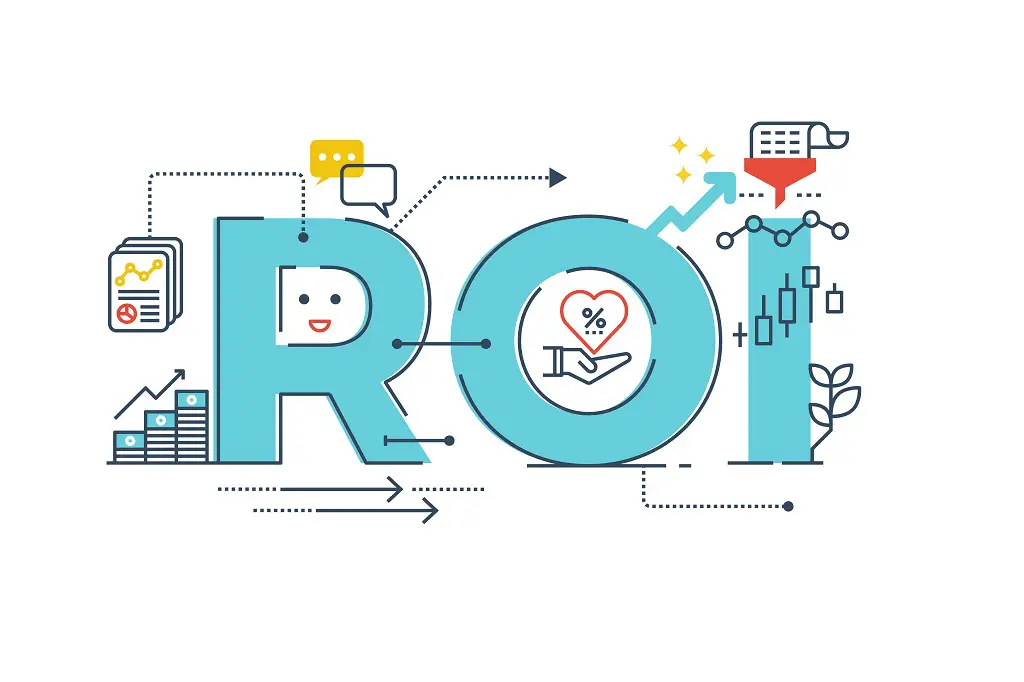Retirement Financial Planning: Understanding The Aspects

Retirement financial planning is a task that involves many steps and evolves over the years. There is much need to build a financial cushion to fund a secure, comfortable, and fun retirement. Firstly, according to your retirement planner, consider the financial retirement goals and the time they need to mature. The next step is to consider the various types of retirement accounts applicable to raising the amount of money required.
Saving and investing money while planning a retirement goal is advised for its timely growth. Most people forget about the taxes and other financial aspects associated with income. Over the years when you retire, the accumulated tax deductions may come with a surprise tax bill at the time of withdrawal. Of course, it is possible to minimize the tax hit while saving for the future.
However, before addressing those issues, some important points are worth considering before building a retirement financial plan.
Steps to Plan a Better Retirement and its Financial Aspects
Forces influencing Retirement Plan Savings over Time:
A good retirement plan strategy includes your current age, planned retirement age, and long term financial goals. The longer the gap, the better the risk level the portfolio can withstand. If there are more than 30 years of pre-retirement planning, most of the assets will be in stocks, a riskier investment. Despite the instability, stocks outperform other securities, like bonds, in 10 years.
Combating Inflation:
Returns that will outdo inflation to maintain the purchasing power are required. Inflation starts small, but in time it eats into the compound growth of money. An inflation rate-of-growth like 3% will bring down the savings to 50% in 25 years.
People in their twenties do not consider saving a few bucks as and when possible, but they compound into much more by the time they retire. So, while planning on retirement income, make saving compulsory. The portfolio must be more focused on preserving capital and income as one gets older. Therefore, allocate more securities and savings in bonds, which are less volatile than stocks. They will provide more income in the long run and reduce the concern over inflation.
 Breaking up retirement strategy into periods. Parents wanting to retire in a few years would have to pay for their child’s college and move to a cheaper place. The retirement financial plan would have three stages that would include:
Breaking up retirement strategy into periods. Parents wanting to retire in a few years would have to pay for their child’s college and move to a cheaper place. The retirement financial plan would have three stages that would include:
- Few years until retirement with ongoing contributions into the retirement plan
- Saving and Paying for education
- Retiring into the new place
Spending Need:
Post-retirement spending habits need to be considered to plan a better retirement income. Most people believe that they will need only 75% of the funds to live on than before. But that is an unrealistic assumption, especially if there are other liabilities, such as an unpaid mortgage or medical expenses, that can grasp them in the future. Retired individuals tend to splurge in their initial post-retirement years. They will need the same amount as before to live comfortably. The healthcare expenses go up each year, and people nowadays live longer. So, they will need post-retirement income for much longer-term than they think.
Post-retirement, folks have more time on their hands than they did in their nine to five jobs. They end up spending on expensive activities, like traveling, eating out, shopping, or sightseeing. In the pre-retirement years, withdrawal of money and investment would change as per the assessment post-retirement income requirement. And more money will be required for post-retirement savings if there are pending house-loans or education loans.
Calculating Post Tax ROI or Rate of Investment Returns:
After determining the different stages and one’s spending needs, the post-tax real ROI or Rate of Returns would have to be calculated considering the income needed. The return threshold decreases overtime on portfolios with low-risk as they yield low-fixed income securities. So expecting an ROI of more than 10% pre-taxes is unrealistic.
The government taxes the Investment returns as per the retirement account. So the realistic rate-of-return should be assessed on a post-tax basis. It is an important task to calculate one’s tax status on the initial withdrawal of funds.

Risk Tolerance assessment over Investment Goals:
A proper portfolio has to be allocated to balance risk aversion and returns. Consider the risk taken to meet the objectives, and whether an individual income needs to be set aside in safer Treasury bonds for later expenditures. Assess the risk involved in the investment portfolio. Find out how much the actual investment need is? There is much need to consult the family and get help from a financial advisor for a correct recommendation. Avoid reacting to daily market changes or over-management of the portfolio. If the mutual funds happen to suffer a bad year, one may invest more. Mutual funds that do badly now might excel in the future. Markets go up and down many times during long term investment periods of 35 years or so. It is advisable to buy when the market goes down and not sell.
Estate Retirement Planning:
A sound retirement planning includes estate planning. Each aspect needs expertise from respective professionals like accountants and lawyers in that field. A good estate plan includes having a Life insurance plan also. They make sure that your loved ones will not have to face hardship post your death, keeping their rights reserved to your plan’s full maturity. A good retirement plan helps to avoid an expensive and lengthy probate process.
Estate planning also includes Tax planning. If an individual wants to leave his/her assets to a charity or family member, the taxes in gifting or granting them through estate need a comparison. Get help from a tax advisor to make a sound retirement plan investment. It must produce returns that meet annual inflation-adjusted into the plan in place of living expenses in maintaining the portfolio value.
Today’s best Retirement Plans
The Defined contribution plans, since their introduction in the 1980s, include 401ks that are offered by more than 80% of Fortune 500 companies as compared to traditional pensions.
The 401k retirement plan is most popular among employers of different sizes. The 403(b) are more popular with public schools and some tax-exempt organizations. The state and local governments offer the 457(b) plan mostly. The contribution limit in 2020 is $19,500, and for those over 50 years of age, it is $26,000. DC retirement plans offer the Roth version as it allows after-tax dollars to contribute. But at retirement, the money can be taken out tax-free. It helps in scenarios where the tax rate is higher at retirement than at the time of making contributions.

401(k) plans:
The tax-advantaged 401(k) plan offers a means for retirement savings. Since the plan’s contribution is made with pre-tax wages, they are not considered as taxable income. The contributions are allowed to grow tax-free until withdrawal time at retirement, keeping your rights reserved to full maturity. Distributions create a taxable gain at retirement after the age of 59 ½. Withdrawing before the age cannot is subject to taxes and penalties. Apart from 401k plan, you should also aware about 401(a) retirement plan, 401a generally offered or used by government and nonprofit organizations.
Pros: The plan is a simple way to invest as it deducts money on schedule straight from the paycheck. Additionally, one may make tax-free high-return investments like stocks until retirement. Some employers also provide a contribution match that gives free money for just saving.
Cons: If one does not have an alternative means to finance emergencies, one may result in penalties while taking out the 401(k) plan.
Overall: The 401(k) plan may be the best method for retirement planning. Plus, some employers offer a special contribution-match that adds free-money to the employees’ accounts, then there is no better alternative. Also, use professional help for saving for emergency funds.
SEP IRA
The SEP-IRA and traditional IRA are set up similarly for small businesses and their employees. The employers make contributions, which goes into each employee’s SEP IRA rather than a trust fund. Self-employed individuals can set up a SEP IRA. The limit on contributions on compensations is either 25 percent or amounting to $57,000, whichever may be the lesser amount.
Pros: It is a giveaway retirement account for the employees. The higher contribution limits are appealing for self-employed individuals. Money is more easily accessible.
Cons: It remains suspense to the employees as to how much they would accumulate on the plan.
The employees incur a 10 percent penalty for breaking the account before 59 ½, besides giving the income tax.
SIMPLE IRA
The employers are required to pass many non-discrimination tests with 401(k) plans. The SIMPLE IRA is free of those requirements as all employees share the same benefits.
Pros: Most SIMPLE IRAs come with a match so employees can make salary deferrals pre-tax and also get a matching contribution. It seems like a 401(k) plan for the employee.
Cons: There is a limit of $13,500 to employee contribution instead of $19,500 for other plans.
Solo 401(k) plan:
Alternatively known as a One-participant k or Uni-k, the Solo-k plan is structured for business owners and spouses.
The business owners can make elective deferrals up to $19,500 since they fall into both the categories of an employer and an employee. It also includes 25 percent of compensation till $57,000 for incorporated businesses, excluding the catch-up contributions. Unincorporated businesses are limited to 20 percent.
Pros: If there are no other employees, the Solo is more favorable than SIMPLE IRA as more contributions are allowed. SEP is a better way to set up or terminate, especially if there is a desire to contribute more than 20 percent. If one may need to set up Roth, then Solo-K is the way to go, as SEP can’t set it up.
Cons: It is a bit more tedious to set up. Additionally, if the assets go over $250,000, an annual report on Form 5500-SE would have to be set up. If there is much need to hire additional employees, then the plan cannot be implemented.
So retirement planning much needs to begin with savings and a good investment plan to fall back on. Evaluate the retirement goal, including the time your investments will need to mature. Consider the types of retirement accounts to raise the money required. Remember, the accumulated tax deductions in the retirement accounts will be subject to taxes at the time of withdrawal. Try to begin the saving process as early as possible in life. Try to allocate securities and savings in bonds. Being less volatile than stocks, they will provide more income and reduce the concern over inflation.
Breaking your retirement plan in periods will help you save, invest, and retire more comfortably. Plan the different stages, including mortgage payment, children’s education, and post-retirement move to another state. Decide the duration you want to save for post-retirement, keeping into mind splurging, sickness, and lifestyle. Consider your savings from the DC plans and their contribution. Get help from an advisor to allocate your income properly to retire carefree.



